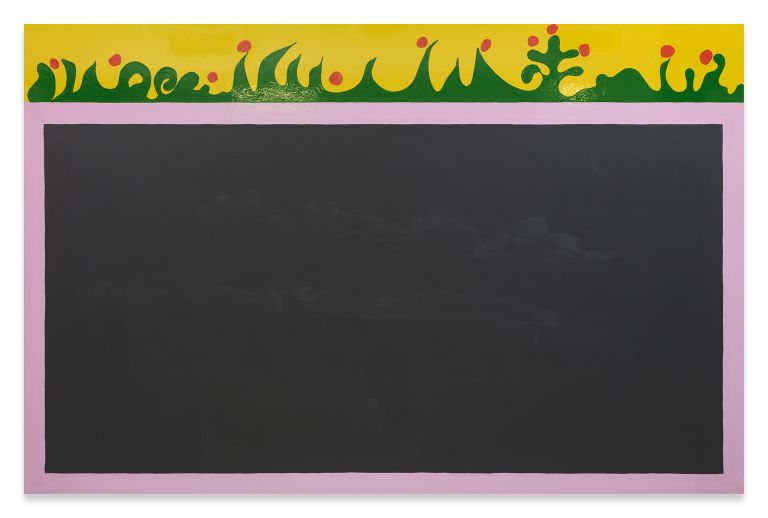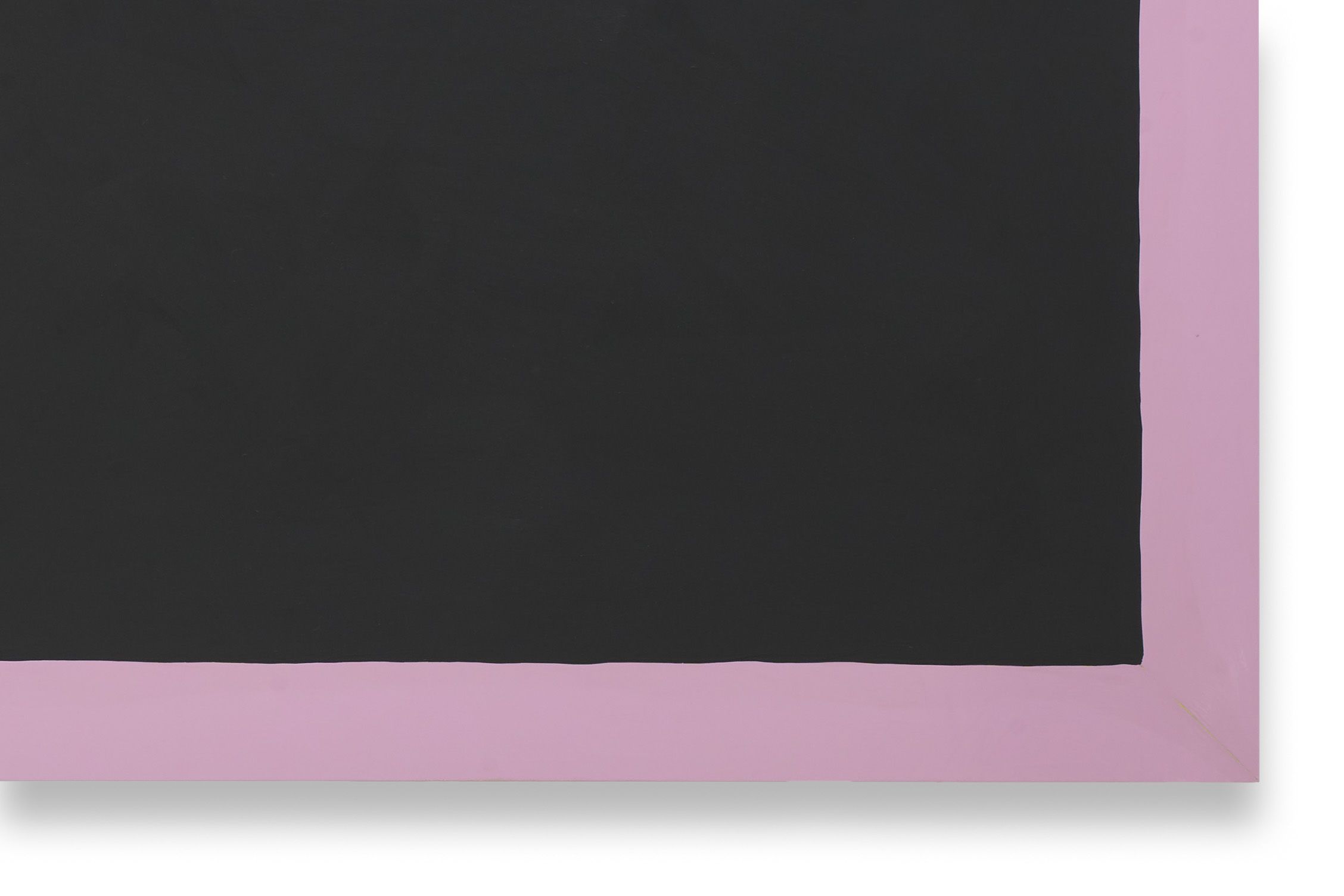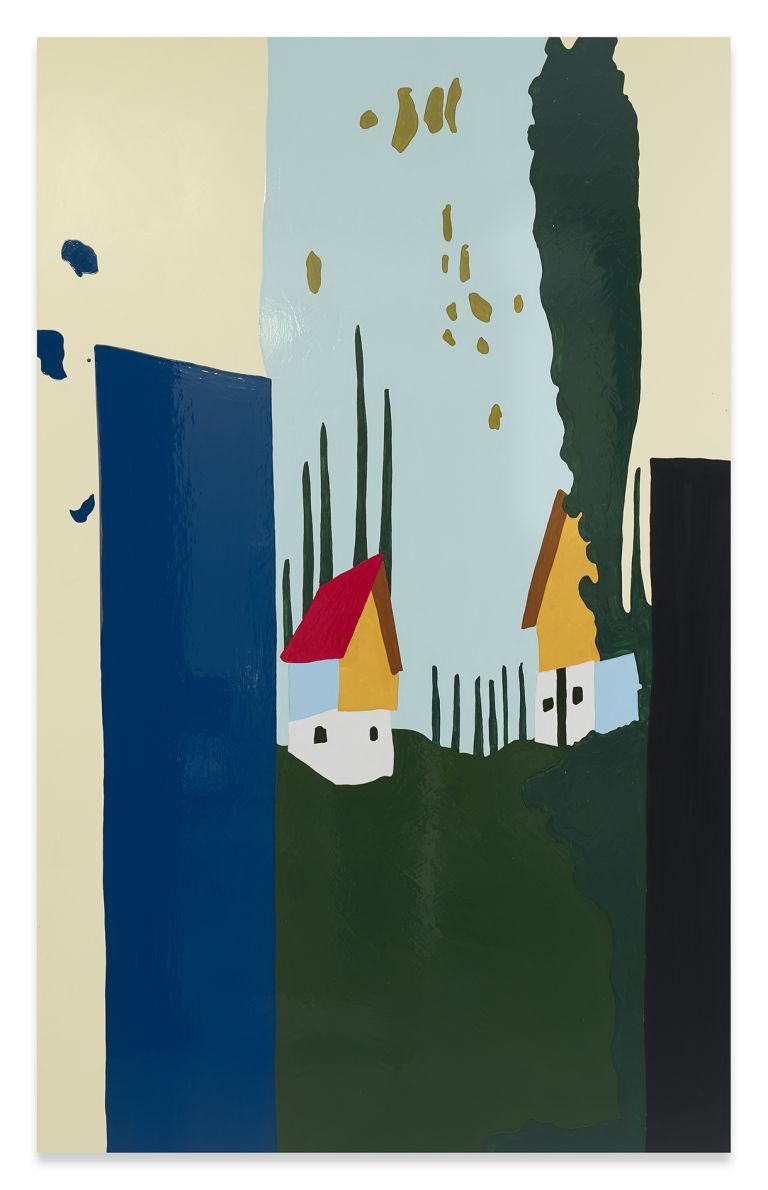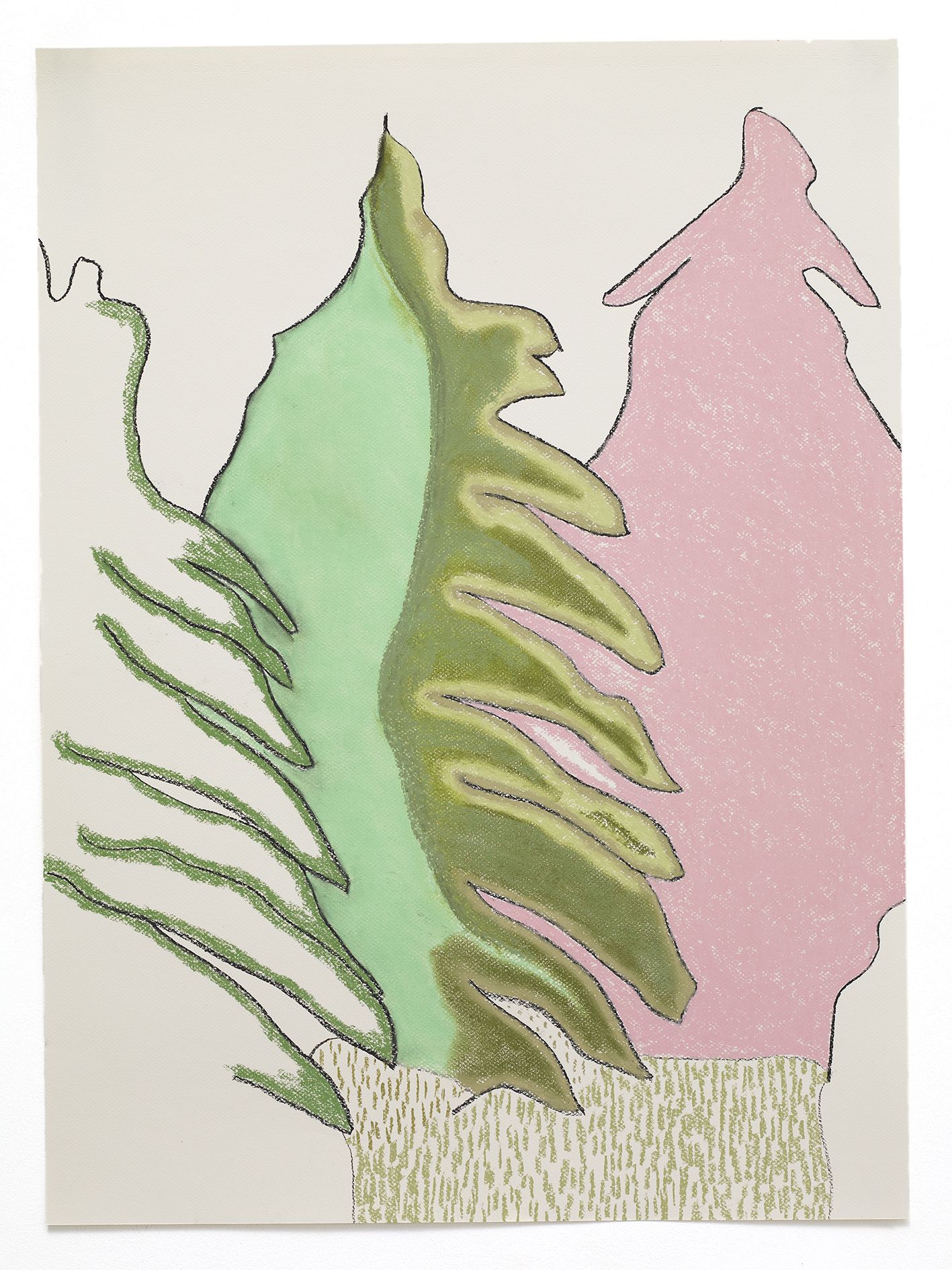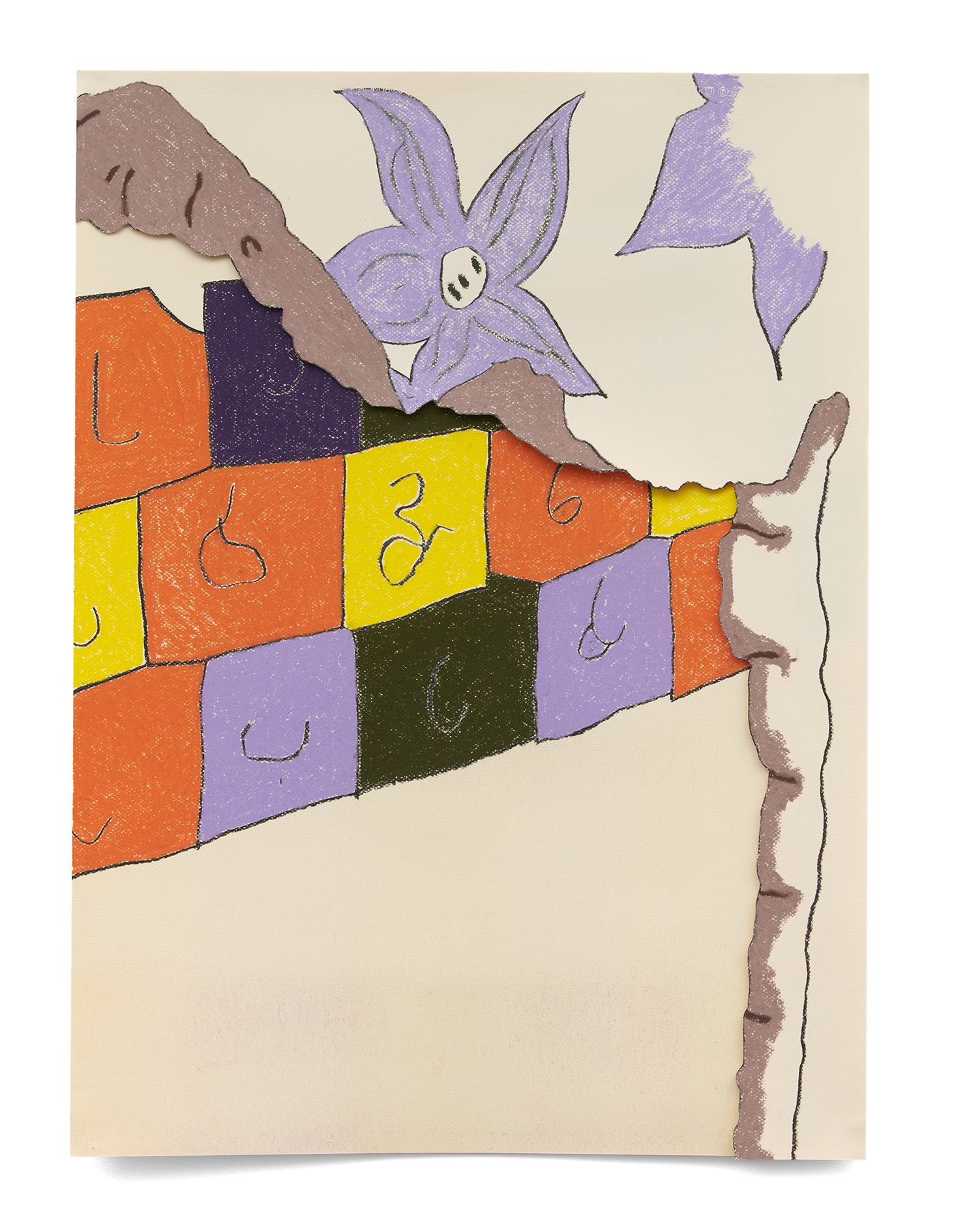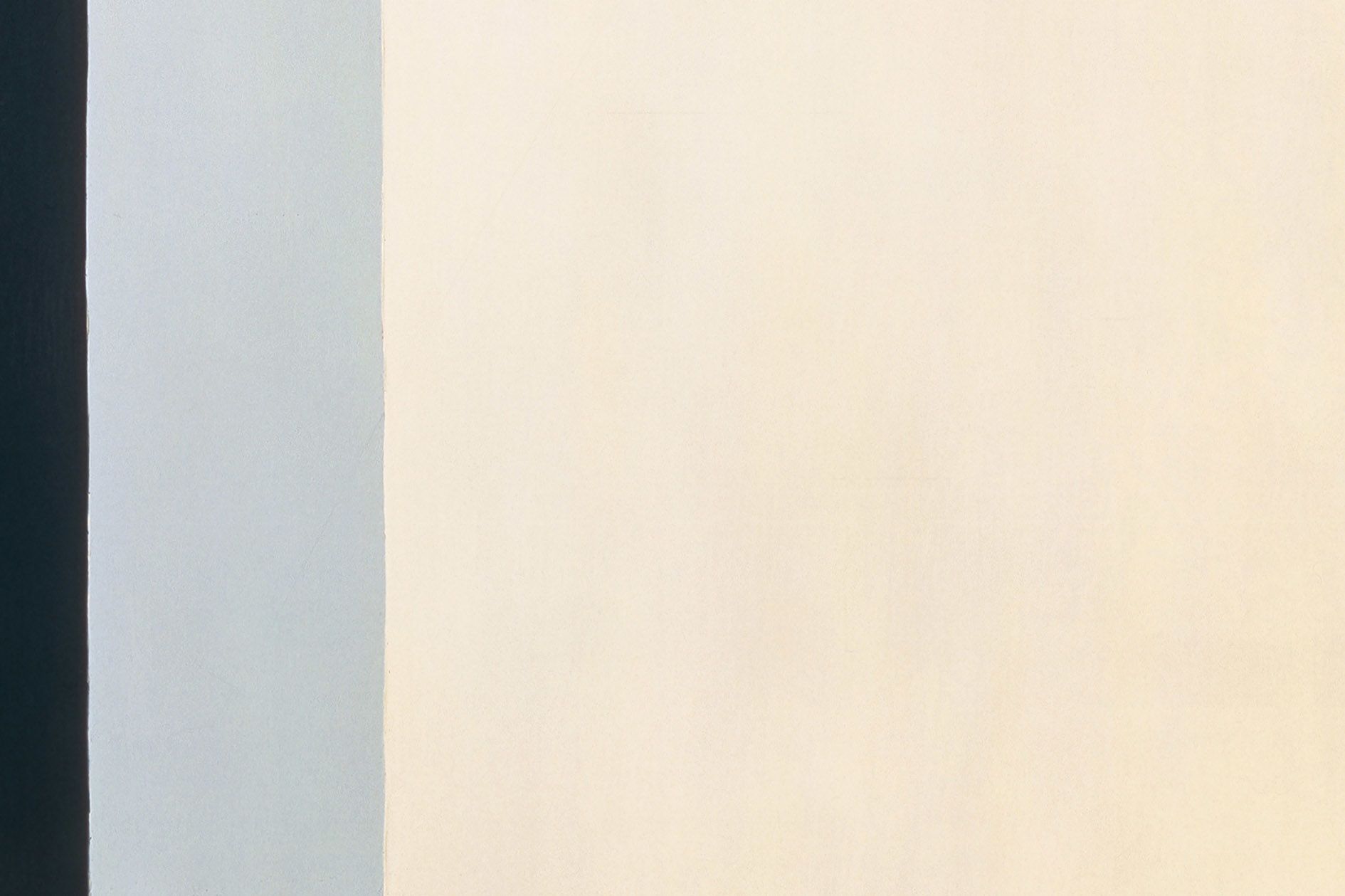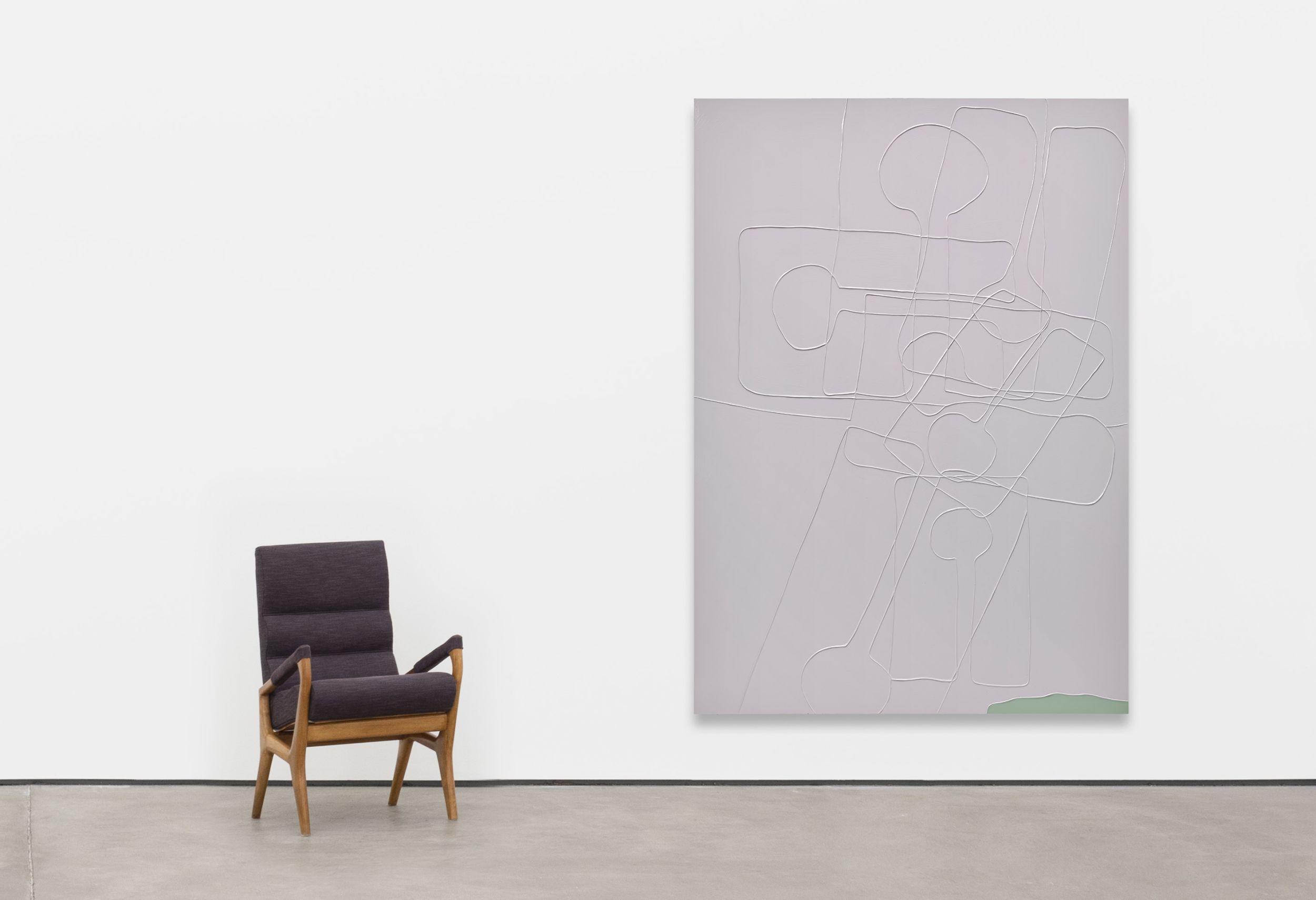Gary Hume derived the title of the exhibition from a famous passage in a meditation by the English poet, and Dean of St Paul’s, John Donne (1572–1631):
No man is an island, entire of itself; every man is a piece of the continent, a part of the main; if a clod be washed away by the sea, Europe is the less, as well as if a promontory were, as well as if a manor of thy friend's or of thine own were; any man's death diminishes me, because I am involved in mankind, and therefore never send to know for whom the bell tolls; it tolls for thee.
Donne doesn’t use the word “archipelago,” but Hume inferred from the passage an image of interconnected islands, ideas and human life. The paintings in Archipelago are images of overlapping, intimately joined bodies, and imply the interrelatedness of all of us. Delivered just a mile away from Hume’s studio, Donne’s meditation resonates today as a timeless plea to strive for connection, not division.
